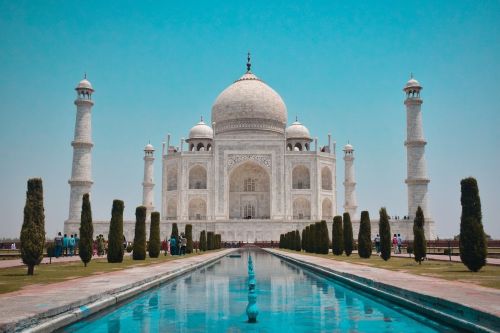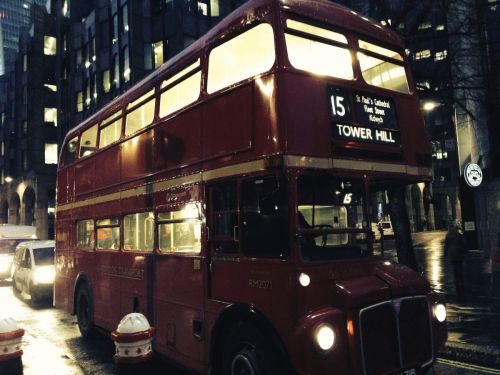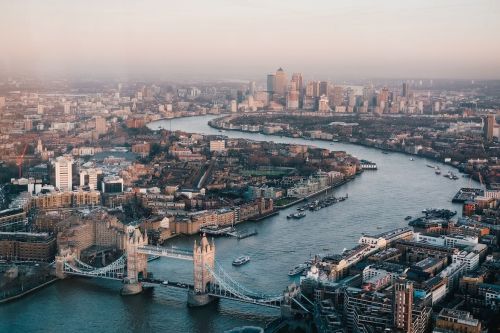There are many heartbreaking stories related to the Tower of London. Over the centuries, the walls of the fortress were filled with screams of torture, executions, murders, suicides, and despair. Throughout its over 900-year history, the Tower of London has mostly inspired fear. State prisoners were held within its damp walls, of which only a few escaped alive.
William the Conqueror also known as William the Bastard was King of England and Duke of Normandy. He was the illegitimate son of Robert the Magnificent, Duke of Normandy, also known as Robert the Devil, and Herleva, the daughter of a tanner from Falaise. William the Conqueror gained his nickname by defeating the newly crowned King Harold in the fight for the throne. William submitted his claims to the throne based on the promise of succession made to him by the previous ruler of England - Edward the Confessor. He was so confident of his victory that he sent his advance guard to London with the order to build a fortress. Archaeological investigations prove that one of the bastions was built on the site of today's Tower. These original walls were replaced by a great stone White Tower, testifying to the power of the new king.
It was at the turn of the 16th and 17th centuries.
It was the first building of its kind in England, and today it is the heart of London's fortress.
His successor, King John, was the first to bring exotic animals (lions, tigers) to the Tower. This tradition lasted for 600 years.
However, it was a tradition that all kings and queens stayed in the Tower the night before their coronation and went from there to Westminster, where all the major celebrations took place.
It became a prison where King Henry VI, who threatened the new ruler Edward IV, was imprisoned and later probably murdered. Later, Edward's sons found themselves in this prison after their uncle Richard III took the throne. The Tower of London became a prison for the high-born inhabitants of England. This tradition was continued by subsequent rulers.
There was a belief that the loss of life at Tower Green was somehow a privilege. This questionable privilege was granted to, among others, Baron William Hastings, Countess Margaret Salisbury, Earl of Essex Robert Deveraux - the favorite of Queen Elizabeth I, as well as two wives of King Henry VIII - Anne Boleyn and Catherine Howard. All of them were executed with an axe, only Anne Boleyn was beheaded with the sword of a French executioner, who in his "graciousness" was brought from France by her distinguished husband.
In 1941, Hess, most likely voluntarily and without the Fuehrer's knowledge, flew a Messerschmitt Me 110E to Great Britain to negotiate the terms of German-British peace. Apart from working for the Nazi party, Hess's passion was aviation. He was an excellent pilot. In May 1941, he covered over 1300 km from Augsburg, Germany, to Scotland. He couldn't land at an airfield that was too small in southern Scotland, so he had to parachute. The British treated Hess as a prisoner of war. Winston Churchill refused to talk to him and had him locked up, first in the Tower of London and then in a guarded estate outside London.
The chapel (built around 1000) was initially located outside the walls of the Tower. It was included in the castle area during the reign of King Henry III, during the expansion of the castle. Near the chapel, there is the place of execution of many famous people, decapitated or imprisoned in the fortress. The bodies were buried underground. During the restoration of the church in 1876, the remains of Anne Boleyn and Catherine Hovard were found and identified. With an impressive epitaph, they were buried in the crypt in front of the main altar.
According to legend, ravens came to the fortress attracted by the smell of the corpses of the Kingdom's enemies, killed near the White Tower in 1554. The practice of keeping birds in captivity to protect the Kingdom probably dates back to King Charles II, who was on the throne from 1660. According to legend, the royal astronomer John Flamsteed complained to the ruler that birds were disturbing him in his observations. He tried to get the king to kill them and almost succeeded. However, when the king received information that if the birds left the tower, the empire would collapse, the king changed his mind and decided that at least six ravens should permanently live in the Tower.
Although their wings are clipped so that they cannot fly away, their lives are idyllic. The birds are closely guarded and fed with fresh fruit, cheese, boiled eggs, fresh meat, and vitamins. The ravens have their guardian, he is one of the Tower guards, the so-called Ravenmaster.
These birds do not have very positive associations. They do not arouse sympathy, they have a sinister appearance resembling scavengers. Besides, ravens are not typical inhabitants of London. They come to the Tower either from breeding or from donations. Meanwhile, one of the current raven guardians, Christopher Skaife, has a completely different view of these birds. He wrote a book based on many years of observing them in the London fortress. It turns out that ravens are very intelligent birds. They live in a hierarchical community and have different characters, personalities, and behaviors, a sense of humor, and the ability to show various emotions. They can lie, cheat, play, and think abstractly. Ravens are the most intriguing birds on Earth.
This guard was established in 1485 by Henry VII. Only candidates from among the yeomen were engaged in it - middle peasants who owned horses, so that they could take part in the fight on horseback. Their duty was to protect the castle, which consisted of two tasks: guarding the prisoners and guarding the treasures and crown insignia kept there.
Guard members are recruited only from professional military personnel from the land forces, airborne troops, air force, or navy. They must have had at least 22 years of impeccable service and have been awarded a medal for long service and exemplary behavior. The duties of the Yeomen Warders are currently protecting the fortress, supervising tourists visiting it, and taking care of the ravens. In 2007, the first woman in history was admitted to the department - 42-year-old Moira Cameron.
Legend says that the first guards of the Tower were guaranteed a ration of meat as a reward. According to tradition, most of them preferred beef over other types of meat. Cosimo III de Medici, prince of the Grand Duchy of Tuscany, who visited the Tower in 1669, reportedly stated that the guards were given exceptionally large rations of beef and that they could easily be called "ox-eaters" or "beef eaters". Over time, the legend became widespread that the guards had the privilege of receiving rations of beef from the king's table.
On their heads, they wear dark blue hats with a head that expands upwards and a red ribbon. Their superior is always the reigning king, currently Queen Elizabeth II.
The Yeomen Warders have guarded the Crown Jewels since 1303. They are, contrary to popular belief, authentic. Every morning there is a Ceremony of the Keys, during which the key-keeper answers the soldier's question: "Stop! Who's coming?" replies: "Her Majesty's Key." The crown jewels are used during ceremonies such as the inaugural session of parliament. They are then worn by the queen. They leave the Tower for a day or two, then return to the vault. There are over 3000 precious stones of extraordinary purity there, all valuables have historical significance and are priceless.
Yeomen Wardens and their families, the fortress's chief, officials, a chaplain, and a doctor live there.
It is an impressive building, 30 meters high (White Tower) and 3.6 m thick. It is surrounded by several rows of walls with towers and a moat. The oldest part is the White Tower, which houses the royal arsenal of weapons. The place of execution was located in Tower Green. Black granite slabs commemorate the place where the scaffold stood. Only crowned heads were beheaded here, aristocrats at Tower Hill, and ordinary mortals at Marble Arch.
Legend says that at night you can meet Anne Boleyn walking there, holding her head in her hands. Numerous witnesses claim that they also saw the ghost of Arabella Stuart, who starved herself to death as a prisoner. Others reportedly saw the ghost of a grizzly bear that was owned by Gregory III.












